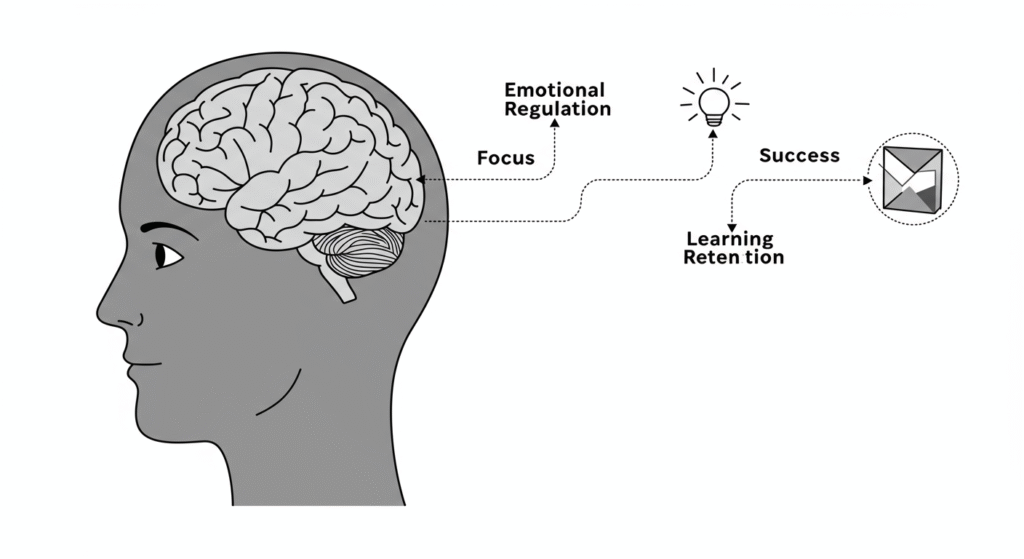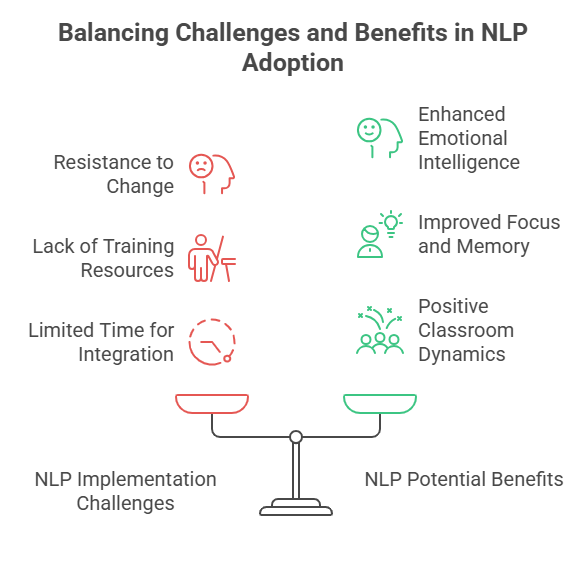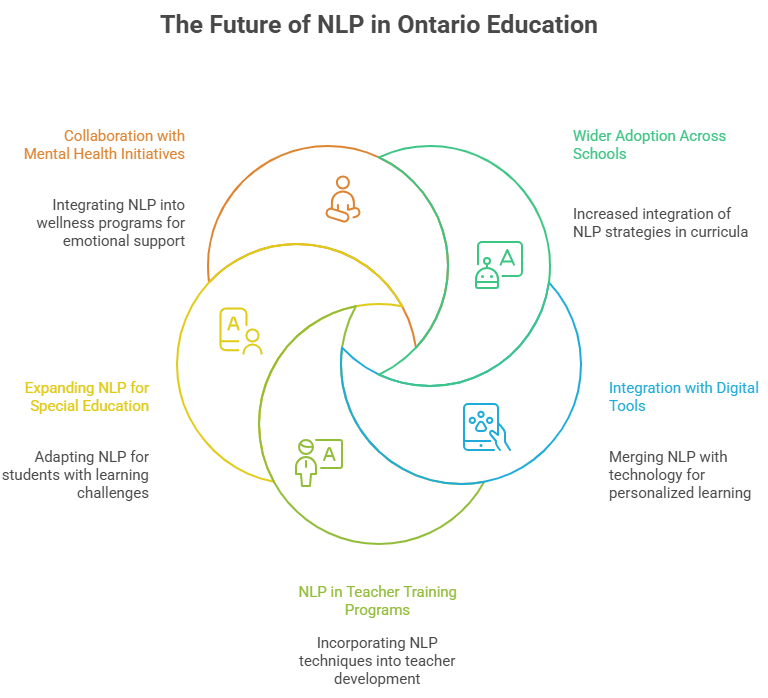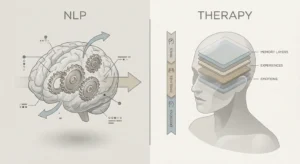Education systems worldwide have been searching for new ways to improve student learning, emotional well-being, and overall classroom dynamics in recent years. One powerful tool gaining traction in Ontario’s schools is Neuro-Linguistic Programming (NLP).
It is a mental “map” that helps individuals understand how they think, learn, and behave.NLP focuses on harnessing the power of language and thought patterns to bring out the best in students and teachers.
But how does it work in the classroom? Can NLP make a difference? Yes, NLP techniques help students focus better, retain more information, and boost their confidence. It’s not just about improving grades; it’s about transforming the learning experience.
For teachers, NLP offers fresh strategies for communication, classroom management, and building stronger connections with their students.
In this article, we’ll explore the impact of NLP on Ontario’s education system, what it is, how it’s being used, and the real benefits it brings. Are you ready to learn how this approach can reshape classrooms and inspire future generations? Let’s explore!
Why NLP Matters in Education

NLP matters in education because it offers a practical way to enhance how students learn and engage with their environment. Think of it as a tool that helps students understand how their minds work, allowing them to learn more effectively, focus better, and overcome obstacles.
In the classroom, NLP goes beyond just improving grades. It helps students identify and change thought patterns that may hold them back. Whether increasing concentration or boosting confidence, NLP provides straightforward techniques that make learning more enjoyable and rewarding.
For teachers, NLP enhances communication and strengthens connections with students. It equips educators with tools to manage behavior, motivate students, and create a positive classroom environment. This leads to better learning outcomes and a more supportive atmosphere for everyone.
Ultimately, NLP is about making learning easier, more effective, and more enjoyable for both students and teachers. It’s a simple yet powerful approach to unlocking potential and creating an environment where everyone can thrive.
The Benefits of NLP in Ontario’s Education System

NLP benefits Ontario’s education system, transforming how students learn and interact with their teachers and peers. Let’s break down some of the key advantages that NLP offers.
Improved Focus and Concentration
NLP helps students train their minds to focus on the task at hand, which is crucial for success in the classroom. Techniques like anchoring and sensory-based exercises allow students to stay present and block distractions.
For example, students struggling to stay focused during class can use NLP techniques to tap into a mental “trigger” that helps them tune in more effectively, improving their ability to process and retain information.
Enhanced Memory and Retention
Memory is key to learning, and NLP provides methods that strengthen students’ ability to remember and recall information. Techniques like association, visualization, and mental rehearsal help students form stronger connections between their learning and personal experiences.
Students can better retain and recall the material when needed, especially during exams or class discussions, by visualizing facts or associating them with colors, sounds, or even movements.
Better Emotional Regulation
Emotions play a significant role in learning and performance. NLP equips students with the skills to manage their feelings, which improves their overall well-being and academic performance. Students learn to recognize when they’re feeling anxious, stressed, or overwhelmed and can use NLP techniques, such as reframing or breathing exercises, to calm themselves.
This emotional control helps students stay focused in class and builds resilience in handling life’s challenges, setting them up for success both inside and outside the classroom.
Stronger Teacher-Student Relationships
Teachers who integrate NLP into their teaching practices build stronger, more effective relationships with their students. NLP helps educators understand how students think and learn, allowing them to adapt their teaching style to meet each student’s unique needs.
Whether using positive language to encourage participation or adjusting the pacing of lessons for better understanding, NLP fosters deeper connections between teachers and students. This connection leads to a more supportive classroom where students feel heard, valued, and motivated to perform their best.
Support for Students with Learning Challenges
NLP is especially beneficial for students with learning difficulties, such as ADHD, dyslexia, or other cognitive challenges. By focusing on how each student processes information and learns, NLP provides personalized techniques to overcome learning barriers.
For example, students with ADHD can use NLP strategies to stay organized and manage impulsivity, while those with dyslexia may benefit from visual or kinesthetic learning tools. NLP’s flexibility allows for an individualized approach that empowers these students to achieve their academic goals and feel more confident in their abilities.
How to Implement NLP Strategies in Ontario Classrooms
Implementing NLP in Ontario classrooms isn’t about overhauling everything; it’s about introducing simple, practical techniques that can make a big difference. Here’s how teachers can start integrating NLP into their daily practices:
Training Educators in NLP Techniques
Teachers need proper training in NLP to be effective in classrooms. Offering professional development workshops or courses on NLP can give teachers the tools they need to understand how students think, learn, and behave.
These workshops should focus on practical techniques like active listening, reframing negative thoughts, and building rapport with students. Once teachers feel confident in using NLP methods, they’ll be able to apply them seamlessly in their teaching.
Using NLP to Improve Classroom Communication
Effective communication is at the heart of teaching, and NLP can significantly improve how teachers interact with students. Teachers can start by using positive language and reframing students’ negative self-talk.
For example, instead of saying, “You didn’t get that right,” a teacher might say, “Let’s look at how we can approach this differently.” This slight shift encourages a growth mindset and helps students see challenges as learning opportunities.
Teachers can also use NLP techniques like mirroring subtly matching a student’s posture or tone to build rapport and make them feel more understood. This approach creates a more open, comfortable classroom where students are more likely to engage and participate.
Incorporating NLP-Based Activities
Teachers can integrate simple NLP-based activities into lessons to boost focus, creativity, and learning. For instance, teachers can guide students through visualization exercises, where they imagine success before a test or performance. These exercises help students build confidence and reduce anxiety, allowing them to perform better.
Another simple NLP technique is anchoring, where students associate a specific gesture or word with a positive feeling. For example, students could press their thumb and forefinger together while thinking of a time when they felt confident. When they face a challenging situation, they can use this gesture to trigger that feeling of confidence.
Adapting NLP for Different Grade Levels
NLP is flexible and can be adapted for various age groups. For younger students, NLP techniques can focus on building emotional awareness and creating positive classroom environments. Simple activities like “name that feeling” games or teaching calming techniques like deep breathing can be a fun and effective way to introduce NLP concepts.
For older students, NLP can be more focused on academic performance and self-management. Techniques like goal-setting, visualization of success, and managing stress using NLP tools can help high school students stay motivated and handle the pressures of exams and assignments.
Building a School-Wide NLP Culture
NLP should be incorporated into the school culture, not just individual classrooms, to create lasting change. Schools can hold regular workshops for both teachers and students on how to use NLP in various areas of their lives.
From improving study habits to managing stress, these tools can be applied in all aspects of education. By making NLP a part of the school’s fabric, it becomes easier for students and staff to use these strategies consistently.
Implementing NLP in Ontario classrooms doesn’t require huge shifts or complicated techniques; it’s about introducing simple tools that profoundly impact learning, behavior, and classroom atmosphere. By giving teachers the necessary skills and empowering students with practical strategies, NLP can help unlock new levels of success and well-being for everyone.
Challenges in Adopting NLP in Ontario Schools

While NLP offers great potential, implementing it in Ontario’s schools comes with its own set of challenges. Here’s a closer look at some of the hurdles schools face when adopting NLP practices:
Resistance to Change
Introducing something new, especially in an established system, can be met with resistance. Many educators may be skeptical about NLP or unsure how it fits into their teaching methods. It can be tough to convince teachers and administrators that NLP is more than a passing trend.
Some might worry that it’s another “fad” that will take time away from traditional, proven teaching techniques. Overcoming this mindset requires education and showing how NLP can complement rather than replace current practices.
Lack of Proper Training and Resources
For NLP to be practical, teachers need proper training. Unfortunately, not all educators have access to the professional development opportunities they need to learn and practice NLP strategies. Without adequate training, even the best techniques can fall flat.
Schools may struggle to find qualified NLP trainers or resources, and this lack of expertise can prevent teachers from fully implementing NLP methods in their classrooms.
Limited Time for Integration
Teachers already have a packed schedule filled with lesson planning, grading, and classroom management. Adding NLP techniques into the mix can feel overwhelming. Schools may lack the time to train staff or integrate these methods into daily routines.
Many educators are already stretched thin, so it’s essential to make NLP implementation as time-efficient and straightforward as possible to prevent burnout and ensure successful adoption.
Difficulty Measuring Results
Unlike traditional academic subjects, the benefits of NLP are not always easy to measure. It can be hard to track improvements in emotional intelligence, focus, or memory retention with concrete data. Some administrators may question its effectiveness without clear metrics to show how NLP impacts student performance.
Demonstrating NLP’s value through student feedback, behavior changes, and overall classroom dynamics is key to gaining broader acceptance.
Balancing NLP with Traditional Approaches
Ontario schools are diverse, with different teaching styles and approaches in place. Some educators might struggle to balance NLP techniques with traditional teaching methods. Integrating NLP without overwhelming students or disrupting existing curriculum structures can be tricky.
Teachers must find ways to smoothly weave NLP strategies into their lessons, ensuring they complement existing practices without overwhelming students or staff.
These challenges are not insurmountable but require careful planning and support. With the right training, resources, and mindset, NLP can become a powerful tool in Ontario classrooms.
Future Prospects of NLP in Ontario Education

NLP’s role in Ontario’s education system is just beginning to unfold, and the future looks promising. As schools and educators continue exploring its potential, NLP could reshape how students learn and interact with the classroom environment. Here’s a look at the future for NLP in education.
Wider Adoption Across Schools
NLP could become more mainstream in Ontario’s schools in the coming years. As more teachers see the benefits and success stories of NLP in action, more schools will likely incorporate NLP strategies into their curricula. This could lead to a broader rollout of teacher training programs, making NLP accessible to educators in every classroom.
Integration with Digital Tools
Technology and education are merging at a rapid pace, and NLP could play a key role in this transformation. With digital tools and apps designed to support learning, NLP can be integrated into these platforms to help students manage emotions, improve focus, and boost memory.
Imagine an app that helps students visualize success before exams, or software that offers real-time feedback on classroom behavior using NLP techniques. The possibilities are endless as technology and NLP come together to support personalized learning.
NLP in Teacher Training Programs
As NLP proves its value in classrooms, it could become a core part of teacher training programs. Teachers could receive training in NLP techniques as part of their professional development, helping them more effectively manage classrooms, engage students, and support emotional growth.
This would create a new generation of educators equipped with the skills to navigate diverse classrooms and cater to various student needs.
Expanding NLP for Special Education
NLP has the potential to greatly benefit students with learning challenges, and its use in special education could grow in the coming years. By adapting NLP techniques for students with ADHD, dyslexia, and autism, educators can provide more personalized support.
The future might see more schools using NLP to create individualized learning plans that help these students succeed academically and socially.
Collaboration with Mental Health Initiatives
As mental health awareness grows, NLP could be integrated into broader wellness programs within Ontario schools. By teaching students how to manage stress, anxiety, and emotions, NLP can be a valuable tool in promoting mental well-being. Schools might implement regular mindfulness and NLP practices, helping students build resilience and cope with the pressures of school life.
The future of NLP in Ontario’s education system looks bright, with growing opportunities for its adoption and integration into the classroom. By supporting both students and teachers, NLP has the potential to revolutionize learning, making it more engaging, effective, and emotionally supportive for everyone involved.
Conclusion
As Ontario’s education system continues to evolve, integrating NLP offers a promising path to unlock the full potential of both students and educators. Beyond academic achievement, NLP fosters emotional resilience, personalized learning, and stronger classroom connection skills that prepare students for success in school and life.
Embracing NLP isn’t just about adopting new techniques; it’s about creating an education culture where every learner feels understood, supported, and empowered to thrive. With thoughtful implementation and ongoing support, NLP can transform classrooms into vibrant communities of growth and possibility, shaping the future of education in Ontario for years to come.





